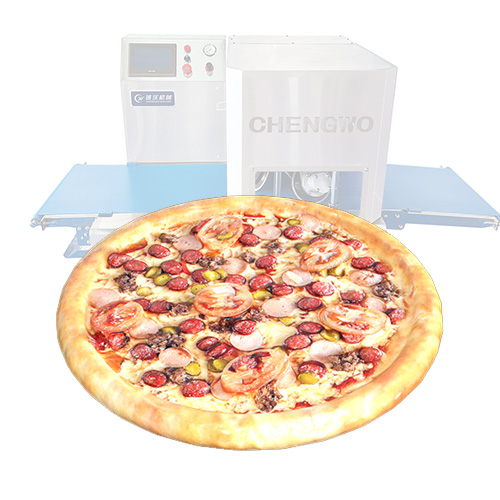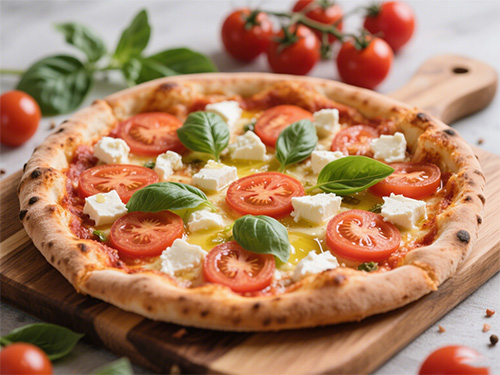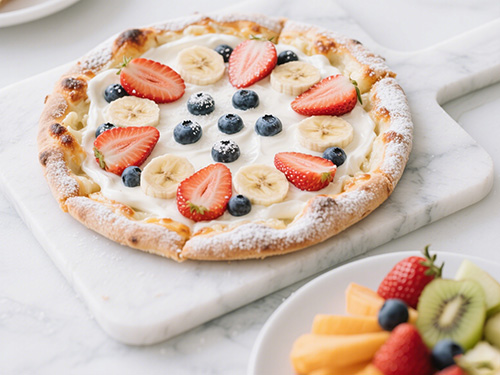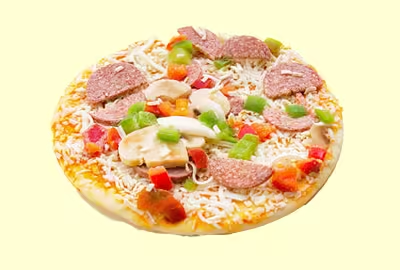


Explore how a pizza dough pressing machine improves consistency, saves labor, and boosts efficiency for pizzerias and bakeries in 2025.
In the world of pizza making, tradition meets technology. While hand-tossing dough remains an art, the demand for speed, consistency, and precision has led many bakeries and restaurants to adopt the pizza dough pressing machine. This innovation helps operators achieve perfect pizza bases every time — evenly shaped, precisely heated, and ready for topping.

A pizza dough pressing machine is a specialized device designed to transform dough balls into uniform pizza bases quickly and consistently. It applies controlled pressure and heat, ensuring even thickness, proper elasticity, and minimal air bubbles. This eliminates inconsistencies caused by manual stretching and helps bakeries maintain quality across all orders.
Perfect for small artisan pizzerias, it allows hands-on control of pressure and thickness, giving operators creative flexibility but requiring more effort.
Combines mechanical pressure with basic temperature controls, offering a balance between efficiency and affordability. Ideal for mid-sized operations aiming for consistent dough bases without a full automation investment.
Designed for high-volume production, it features programmable settings for size, thickness, and pressing time. It minimizes labor costs, speeds up production, and ensures every pizza base meets exact specifications.
The heating plate is the heart of every pizza dough pressing machine. Made of durable aluminum or stainless steel, it ensures even heat distribution and a soft, pliable dough texture.
Hydraulic or pneumatic pressure systems determine how evenly the dough spreads. Consistent pressure avoids air bubbles and keeps each pizza base uniform in thickness.
Modern presses feature smart control panels that allow operators to pre-set temperature, pressure, and pressing time — ensuring repeatable quality across every batch.
A good pizza dough pressing machine incorporates non-stick coatings, food-grade stainless steel, and easy-to-clean surfaces that comply with food safety standards.
Uniform thickness and shape mean no more uneven cooking or wasted ingredients. Consistency improves customer satisfaction and ensures every pizza meets your brand standards.
By automating the pressing process, restaurants and bakeries reduce manual handling, lowering labor costs. Fewer staff hours are needed for repetitive dough shaping, allowing employees to focus on other tasks.
High-capacity presses can produce dozens of dough bases per minute. This ensures fast service during peak hours, meeting the demands of busy kitchens and large-scale pizza chains.
Controlled heat and pressure guarantee a pizza base with a crisp exterior and soft interior. This precision eliminates guesswork in baking and improves end-product quality.
With programmable settings, operators can quickly adjust the machine for different pizza sizes, thicknesses, or crust types—from thin-crust Margherita to thick Sicilian-style pizzas.
When selecting a machine, consider:
For industrial-scale operations, integrating a pizza dough pressing machine into a full automatic pizza production line maximizes ROI and consistency.
| Feature | Dough Pressing Machine | Dough Sheeter |
|---|---|---|
| Texture | Puffy, artisanal crust | Thin, uniform layers |
| Process | Vertical heat and pressure | Rolling between cold rollers |
| Speed | Faster for pizzas | Slower but precise |
| Best Use | Pizza bases | Flatbreads, pastries, croissants |
Understanding this difference helps operators choose the right equipment based on product type and texture goals.
Causes: uneven pressure, worn plates, or incorrect dough hydration.
Solution: Recalibrate the machine, check hydraulic or pneumatic systems, and ensure dough consistency.
Causes: insufficient lubrication, high dough hydration, or dirty plates.
Solution: Clean plates regularly, lightly flour dough, and adjust temperature to prevent sticking.
Causes: worn sensors or uneven pressure distribution.
Solution: Inspect and replace worn components, recalibrate sensors, and ensure regular maintenance schedules.
Causes: poor ventilation, clogged heat elements, or sensor malfunctions.
Solution: Maintain proper airflow, clean heating elements, and verify sensor accuracy.
Regular use can wear plates, bearings, or hydraulic components. Implement a preventive maintenance plan to replace parts before failure, minimizing downtime.
A well-designed pizza production line integrates multiple steps seamlessly:
At Chengwo, our pizza dough pressing machines are engineered for reliability and performance, easily integrating with automated pizza lines. Each system is built with precision engineering and food-safe materials to support both small and large-scale production.
Modern pizza dough pressing machines use optimized heating systems to reduce electricity and gas consumption. Variable-speed motors and insulated plates maintain dough temperature while minimizing energy waste. These improvements lower operational costs and help bakeries meet sustainability targets.
Precision pressing ensures every dough ball reaches the intended size and thickness. This reduces offcuts and unused dough, minimizing food waste and improving cost efficiency.
Many machines are now built with recyclable stainless steel, aluminum, and durable non-stick coatings. Using environmentally responsible materials reduces the factory’s overall carbon footprint and supports eco-conscious operations.
Rounded corners, smooth welds, and detachable plates make cleaning faster and more thorough. CIP (Clean-In-Place) compatible machines prevent bacterial buildup, ensure food safety, and help bakeries comply with strict health regulations.
The pizza dough pressing machine has become an essential tool in the evolution of modern pizzerias and bakeries. It delivers consistency, saves time, and ensures that every pizza meets exacting standards of texture and taste. At Chengwo, we design intelligent dough pressing systems that integrate seamlessly into automated pizza production lines. Whether you’re upgrading a local shop or scaling a factory operation, our solutions offer lasting performance and measurable ROI.
What’s the difference between a pizza dough press and a sheeter?
A press uses heat and pressure to shape dough, while a sheeter rolls it out cold. Pressing creates a fluffier crust; sheeting gives a thinner base.
How hot should a pizza dough press be?
Most operate between 120°C–160°C depending on dough type and desired texture.
Can I use a pizza dough pressing machine for gluten-free dough?
Yes. Adjust pressure and temperature to maintain elasticity and prevent cracks.
Is it worth buying an automatic pizza dough press for a small restaurant?
If consistency and labor savings are important, a compact model can quickly pay for itself.
How often should I clean my dough pressing machine?
Clean plates after every shift and perform deep cleaning weekly to ensure safety and machine longevity.
How long does a pizza dough pressing machine last?
With regular maintenance, high-quality machines can operate reliably for 8–10 years or more.


